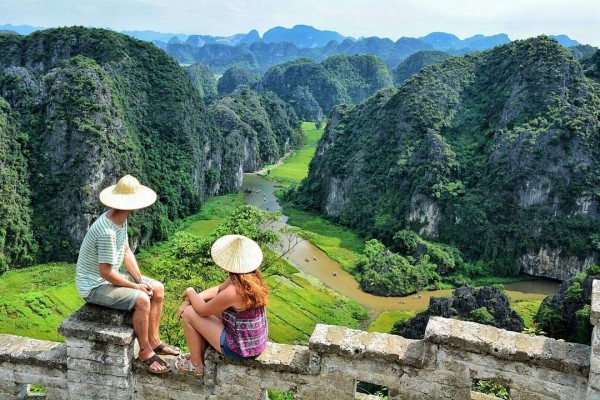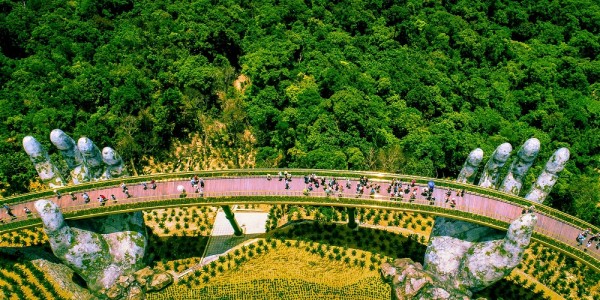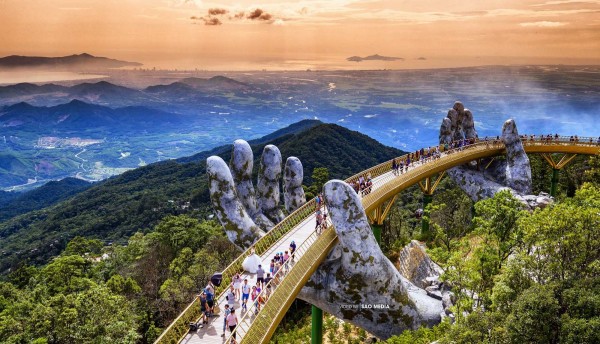One-Pillar Pagoda (Chùa Một Cột)
Amongst a number of beauty-spots in Hanoi, the One-Pillar Pagoda (one of Vietnam’s two most iconic pagodas, side by side the Perfume Pagoda) is a popular tourist attraction.
The One Pillar Pagoda (Vietnamese:Chùa Một Cột, formally Diên Hựu tự , which litterally means “long lasting happiness and good luck”) is a historic Buddhist temple in Hanoi, the capital of Vietnam. As you visit Hanoi, you may come to various other monuments, parks and historical places. Yet, the One-Pillar Pagoda reflects the architectural splendour that the country has grown.


Where is it located? The unique pagoda is located in the western part of the city, near Ho Chi Minh’s Mausoleum, Ong Ich Khiem St., Ngoc Ha, Ba Dinh District, Hanoi.
The Legendary story: According to legend, ageing Emperor Ly Thai To of the Ly dynasty, who had no children, used to go to pagodas to pray to Buddha for a son. One night, he dreamt that he was granted a private audience to the Bodhisattva Avalokiteshvara, who was seated on a great lotus flower in a square-shaped lotus pond on the western side of Thang Long Citadel, gave the King a baby boy. Months later, when the Queen gave birth to a male child, the Emperor ordered the construction of a pagoda supported by only one pillar to resemble the lotus seat of his dream in the honour of the Bodhisattva Avalokiteshvara. According to a theory, the pagoda was built in a style of a lotus emerging out of the water.
Formation: Emperor Ly Thai Tong had this temple constructed in gratitude for the mentioned significant legendary event in 1049, by erecting a pillar in the middle of a lotus pond, and a temple of lotus-shape, exactly similar to what he saw in the dream. This unique shape of the pagoda together with the special story has been of great absorption to hundreds of thousands of international tourists!
This Pagoda was located in what was then the Tây Cấm Garden in Thạch Bảo, Vĩnh Thuận district in the capital Thăng Long (now known as Hanoi. It was built of wood on a single stone pillar 1.25 m in diameter, and it is designed to resemble a lotus blossom, which is a Buddhist symbol of purity, since a lotus blossoms in a muddy pond. Before the pagoda was opened, prayers were held for the longevity of the monarch, hence being considered a temple at that time. During the Ly Dynasty era, the temple was the site of an annual royal ceremony on the occasion of Vesak, the birthday of Gautama Buddha. A Buddha-bathing ceremony was held annually by the monarch, and it attracted monks and laymen alike to the ceremony. The monarch would then free a bird, which was followed by the people.
As time went by, the pagoda succumbed to many ravages caused by the colonial powers. In 1954, the French Union forces destroyed the pagoda before withdrawing from Vietnam after the First Indochina War, and it was rebuilt afterwards.
Today’s form: What you see today of the pagoda is a new form recovered in 1955 when it was refurbished with a concrete pillar from its remnants by the Vietnamese government. Today's structure can be just called the replica of the original pagoda, which was a large building. Locals believe that if you pray here, it will invoke well-beings and prosperity.
Opening time: The pagoda is open daily from 08:00 a.m to 05:00 p.m. Entrance is free.
Note: Remember to wear full-length clothes as you visit the One-Pillar Pagoda as well as other pagodas in the nation.
For those who want to visit this pagoda with a tour guide so they can learn more about this unique attraction in Hanoi, it is recommended that visitors book a day tours in Hanoi. Both Hanoi sightseeing tours or Hanoi culture tours include One Pillar Pagoda as one stop in their itineraries so the variations of tours are quite diversified for tourists to choose from. For Hanoi cultural city tour itinerary, more details can be found here.








